County Extension Agent
August 23, 2016 - Each year, we can fully expect to see the devastating Fall Armyworm make it’s appearance in our hay meadows. Unlike their name, they tend to start making their damage in mid to late summer. Earlier weather patterns would appear to me to set up conditions ripe for their appearance. And with such a potential economic pest out there, it bodes well to be prepared.
From research and field observation, the fall armyworm does not apparently overwinter here. Moths fly north from south Texas each year to re-infest this area. Outbreaks can occur in late summer and fall, and follow periods of rain which create favorable conditions for eggs and small larvae to survive.
Armyworms are very small at first, causing little plant damage, and as a result, infestations often go unnoticed early on. Larvae feed for 2-3 weeks and full grown larvae are about 1 to 1 2 inches long. Armyworms consume 80% of their total food intake during the last few days of development.
Once larvae are greater than 3/4 inch, the quantity of leaves they eat increases dramatically. During the final 2-3 days of feeding, armyworms consume 80% of the total foliage consumed during their entire development. For this reason, extensive feeding damage can occur in a few days.
Development from egg to adult requires about 4 weeks during the summer and is longer during cool weather. There are several generations a year. Development ends with cold weather in November.
Given their immense appetite, great numbers, and marching ability, armyworms can damage entire fields or pastures in a few days. Once the armyworm completes feeding, in tunnels into the soil about an inch and enters the pupal stage.
A full grown armyworm tunnels into the soil and transforms to the pupae, an inactive, non-feeding stage. In 7-10 days, the moth emerges from the pupa and starts its cycle anew.
The key to managing fall armyworms is to detect infestations before they have caused economic damage. Often, landowners will notice large numbers of cattle egrets on a hay meadow. Though the birds are easy to spot, this may be too late.
The best way I’ve heard to detect armyworms is to regularly scout pastures early in the morning while there is plenty of dew on the grass. Wear your black rubber boots and walk thru fields, or drive thru them on your ATV with a foot dragging off to the side, looking for small caterpillars on your boot. Affected pasture grass may have a ragged look, different from grazed or mowed grass.
Fall armyworm larvae feed primarily during the night and during cloudy weather. Later during the day, look for armyworms under loose soil and fallen leaves on the ground.
The density of armyworms sufficient to justify insecticide treatment will depend on the stage of crop growth and value of the crop. Seedling plants can tolerate fewer armyworms than established plants. Infestations of 2-3 armyworms per square foot may justify treatment.
Hot, dry weather and natural enemies limit armyworm populations. Insect parasites such as wasps and flies, ground beetles, and other predators help suppress armyworm numbers. However, these natural factors can be overwhelmed when large numbers of migrating moths lay tens of thousands of eggs in a field.
There are a number of insecticides labeled for armyworm control in pastures. Remember that approved insecticides can kill non-target insects. Do not allow drift across fences to areas with blooming plants as beneficial pollinators will certainly be harmed.
Here are the names of some good control products: Karate Z, Lambda-Cy, Mustang Max, Tombstone Helios, Warrior II, Baythroid XL, Dimilin 2L, Prevathon, Besiege, Malathion, and (of course) the variety of Sevin products.
Always read and follow all label instructions and restrictions on any pesticide use.
Lane Dunn is the County Extension Agent for agriculture and natural resources for Shelby County. His email address is jldun@ag.tamu.edu.
July 13, 2016 - There are several competing concepts to “care for the environment” while keeping your yard and landscape looking great. Below I’ll lay out some practices that benefit our environment, saves you time, and keeps money in your pocket all while helping your lawn look good.
Most people like a beautiful, green lawn and often use more fertilizer and water than necessary. More mowing, extra back-breaking work in bagging grass clippings, and higher water bills often result.
It is a two-step plan that involves not bagging your lawn clippings and watering just once (if possible) each week.
Between March and September, the volume of residential solid waste increases 20 to 50 % due to grass clippings. During the spring and summer months, grass clippings put extra work on the garbage collection system and use up valuable landfill space.
First, don’t bag up your grass clippings. By leaving then on the lawn, you won’t have to stop every 10 minutes to empty your mower bag. Homeowners following this “Don’t Bag It” lawn care plan report they mow their lawns in 38% less time than when they bagged the grass clippings.
By leaving the clippings on the lawn, you will allow them to work their way back into the soil, recycling itself. Just imagine a free fertility product that was slow release over the complete growing season and provided all the nutrients your lawn needs. Indeed, this comes from the lawn clippings.
Grass clippings left on your lawn don’t contribute to thatch, but return valuable nutrients to the soil. They contain about 4 % nitrogen, 0.5 %phosphorus and about 2 % potassium, as well as all the necessary minor elements plants need.
If you want to go the extra mile, you could bag up some of your grass clippings to make an excellent compost for gardens. Compost use is the best way to improve garden soil because it returns nutrients to the soil and improves the soils physical characteristics.
The second step is changing your watering regimen. The best time to water is early morning so less water is lost to evaporation. The worst time to water is in the evening because the lawn stays wet all night. This mimics the time of day when the lawn is naturally wet from the dew each morning. Watering at night keeps the leaves wet for a much, much longer time frame and absolutely begs for disease to take your lawn.
Water is a needed component for a great lawn. During the driest period of summer, our lawns usually require about 1 inch of water every 5 to 6 days. If an irrigation system runs for 15 minutes every other day, you are shortchanging your lawn and not getting the most out of your water bill as well as the investment in the sprinkler system.
Furthermore, lawns watered too frequently tend to develop shallow root systems which make them more susceptible to grub damage.
If possible, apply about an inch of water to your lawn all on one day each week. This will soak the soil far deeper than the same total amount spread out over three applications in a week. If water runs off the lawn before 1 inch is applied, turn the sprinkler off, let the water soak in for about an hour, and then continue to water later the same morning.
I challenge you to take this approach with your lawn and see if you have a healthier, lower cost lawn with fewer problems.
Lane Dunn is the County Extension Agent for agriculture and natural resources for Shelby County. His email address is jldunn@ag.tamu.edu
The members of Texas A&M AgriLife will provide equal opportunities in programs and activities, education, and employment to all persons regardless of race, color, sex, religion, national origin, age, disability, genetic information, veteran status, sexual orientation or gender identity and will strive to achieve full and equal employment opportunity throughout Texas A&M AgriLife.
Submitted by Lane Dunn Shelby County Extension Agent-AG
June 22, 2016 - Texas A&M AgriLife Extension Service - Shelby County office is pleased to announce that the community garden is off to a great start. To date, 342 pounds of vegetables have been harvested and donated to the Shelby County Outreach Ministry – Senior Nutrition Site to supplement the senior adult lunch program and for distribution to homebound elderly in our county.
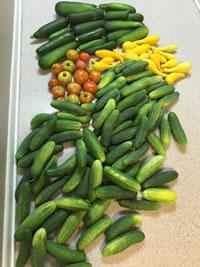 This project was established to fulfill the growing need in Shelby County of food insecure senior adults and to also provide fresh vegetables that are high in essential vitamins to this population to improve their nutritional health. “Vitamin A, C and E are essential to the good health of all humans, in particularly our senior adults, that may not receive ample supply through canned and processed foods,” said Jheri-Lynn McSwain, Family & Consumer Sciences County Extension Agent.
This project was established to fulfill the growing need in Shelby County of food insecure senior adults and to also provide fresh vegetables that are high in essential vitamins to this population to improve their nutritional health. “Vitamin A, C and E are essential to the good health of all humans, in particularly our senior adults, that may not receive ample supply through canned and processed foods,” said Jheri-Lynn McSwain, Family & Consumer Sciences County Extension Agent.
A recent study published by the Texas A&M Health Science Center School of Public Heath found that older (age 65-93) rural adults fail to meet the recommended nutrition guidelines based on the food guide pyramid. In addition, this study also identified older rural adults as having high levels of obesity and overweight concerns and most of these adults had inadequate dietary intake (low folate, magnesium, and Vitamin E) and were at nutritional risk. Results from a nationally representative study confirm that older rural adults fail to meet recommendations for daily fruit and vegetable consumption.
The Shelby County Community Garden project was kicked-off in February 2016 after gaining approval from the Shelby County Commissioners Court. Numerous local civic organizations and business rallied to the support of this project by providing funds to get the garden started. “We truly appreciate all the support of the local residents and organizations to back this important life-changing project,” stated Lane Dunn, Agriculture & Natural Resource County Extension Agent.
“Volunteerism is integral to the success of this project.” Dunn went on to say, “We have had 4-H youth assisting with the maintenance and harvesting of the garden, but would like to invite any interested individuals to contact us if you would like to lend a helping hand.”
This past spring the Extension agents planted zucchini, yellow squash, cucumbers, and sweet corn. In addition, they are conducting variety trials on four hybrid tomato species to determine which grows best in Shelby County and has the finest taste between these varieties. Okra, purple hull peas, peppers, and sweet potatoes are growing and will be harvested in the near future. This fall, with the assistance of volunteers, the Extension agents are planning to plant broccoli, cauliflower, and onions, to name a few vegetables.
For more information on the community garden or to volunteer, contact Shelby County Extension agents, Jheri-Lynn McSwain at jlmcswain@ag.tamu.edu or Lane Dunn at jldunn@ag.tamu.edu or call the Extension office at 936-598-7744.
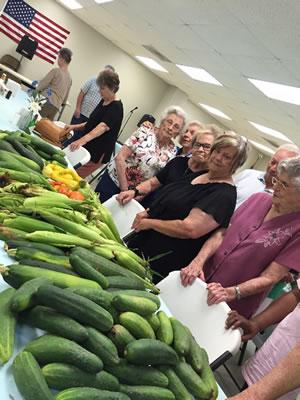
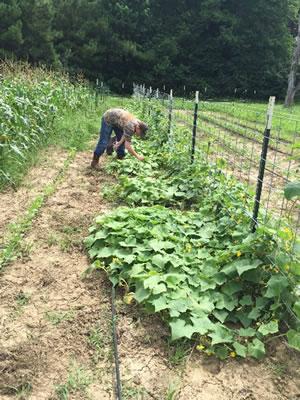
Submitted by Jheri-Lynn McSwain
 June 22, 2016 - Lance Holloway and Seth Shamblin represented Shelby County 4H in the State Outdoor Challenge held in Seguin, Texas June 10th-12th.
June 22, 2016 - Lance Holloway and Seth Shamblin represented Shelby County 4H in the State Outdoor Challenge held in Seguin, Texas June 10th-12th.
The outdoor challenge consists of several events and participants work together as a team. This year the events included gear judging, shotgun, camping safety skills, hunting skills, kayaking, rifle, archery, biologist skills, fishing and rock climbing. They won 1st place team in the Intermediate division.
We would like to say Congratulations on a job well done representing Shelby County. If you have questions or would like more information regarding 4-H, please give us a call at 936-598-7744.

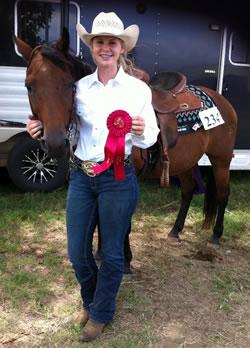 June 21, 2016 - Loren Vandrovec of the Shelby County 4-H Horse project traveled to Athens, Texas June 14th to compete in the East Region 4-H Horse Show. The horse show consists of Districts 4 and 5 with over 40 counties participating.
June 21, 2016 - Loren Vandrovec of the Shelby County 4-H Horse project traveled to Athens, Texas June 14th to compete in the East Region 4-H Horse Show. The horse show consists of Districts 4 and 5 with over 40 counties participating.
Lauren competed in multiple events placing 2nd in Ranch Sorting, 7th in Senior Poles, 8th in Senior Poles, and 8th in Senior Stakes.
A big thank you goes out to our horse project leaders Mike Baldwin, Rusty Hall and Robert Griffin for their time and dedication to the youth in our 4 H- horse project. When you see Ms. Vandrovec tell her congratulations for a job well done for representing Shelby County.
If you have any questions or would like more information regarding 4-H, please give us a call at 936-598-7744.
Submitted by Lane Dunn
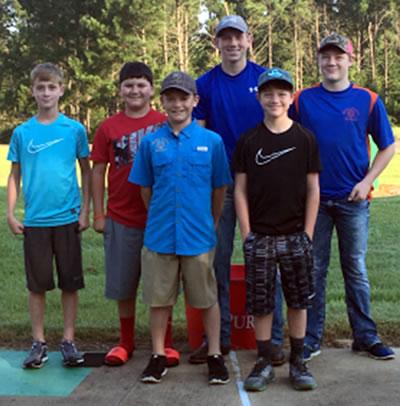
June 16, 2016 - The 21st Annual Houston County Whizbang was held in Crockett on Friday and Saturday, June 10th and 11th. Every Shelby County 4-H Shooter came home with medals!
Shelby County 4-H shooters had six shooters compete on Friday. They were Lance Holloway, Hagan Craig, Colby Lout, Colton Gutermuth, Tucker Scarber and Dawson McFaddin. On Saturday, the seniors competed. They were Nic Lambert, Konner Windham and Logan Holloway.
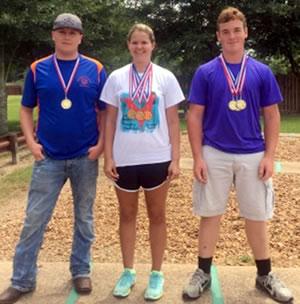 Results are as follows:
Results are as follows:
Novice Trap - Dawson McFaddin (2nd place), Colby Lout (6th place)
Novice Skeet - Colby Lout (4th place)
Novice 5 Stand - Dawson McFaddin (1st place), Colby Lout (3rd place)
Junior Trap - Tucker Scarber (2nd place), Hagan Craig (5th place)
Junior Skeet - Tucker Scarber (4th place), Hagan Craig (5th place)
Junior Whizbang - Tucker Scarber (5th place), Hagan Craig (6th place)
Intermediate Trap - Lance Holloway (2nd place)
Intermediate Whizbang – Colton Gutermuth (5th place), Lance Holloway (6th place)
Senior I Trap - Logan Holloway (2nd place)
Senior I Skeet - Logan Holloway (6th place)
Senior I Whizbang - Logan Holloway (4th place), Nic Lambert (5th place)
Ladies Senior II - Konner Windham (3rd place) Trap, (2nd place) Skeet and (3rd place) Whizbang.
We would like to say Congratulations on a job well done representing Shelby County.
If you have questions or would like more information regarding 4-H, please give us a call at 936-598-7744.
Submitted by Lane Dunn
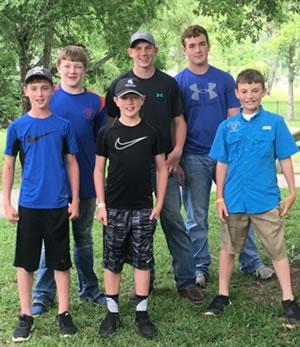 May 23, 2016 - It was another great weekend for the Shelby County 4h Shooters. Representing the 4h shooters were Colby Lout, Tucker Scarber, Dawson McFadden, Lance Holloway, Colton Gutermuth and Logan Holloway. The Walker County whizbang was held Saturday, May 21st at Creekwood Shooting Sports range in Conroe. We would like to say Congratulations on a job well done representing Shelby County.
May 23, 2016 - It was another great weekend for the Shelby County 4h Shooters. Representing the 4h shooters were Colby Lout, Tucker Scarber, Dawson McFadden, Lance Holloway, Colton Gutermuth and Logan Holloway. The Walker County whizbang was held Saturday, May 21st at Creekwood Shooting Sports range in Conroe. We would like to say Congratulations on a job well done representing Shelby County.
Results are as follows:
Intermediate Novice Division
Dawson McFadden - Sporting Clays (1st place), Whizbang (2nd place)
Team Novice Sporting Clays (2nd place team) - Dawson McFaddin and his father, Neal McFadden
Junior Division
Tucker Scarber - Skeet (4th place), Whizbang (4th place), Sporting clays (5th place)
Intermediate Division
Lance Holloway- Skeet (1st place), Whizbang (5th place)
Colton Gutermuth - Skeet (2nd place), Sporting Clays (2nd place)
Senior I Division
Logan Holloway - Whizbang (6th place)
If you have any questions or would like more information regarding 4-H, please give us a call at 936-598-7744.
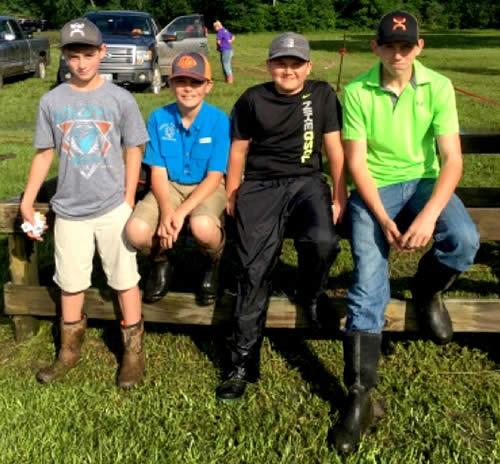
May 12, 2016 - The Madison County Whizbang was held on April 30th for juniors and intermediates. On Sunday, May 1st the senior I and senior II’s competed.
Shelby County 4-H shooters had five kids participate in the shoot. Participating on Saturday were Colby Lout, Hagan Craig, Lance Holloway and Colton Gutermuth. On Sunday, Logan Holloway participated. Results are as follows;
Intermediate Whizbang: Colton Gutermuth 3rd, Lance Holloway 6th
Intermediate Skeet: Lance Holloway 6th
Intermediate Trap: Lance Holloway 5th
Senior I Skeet: Logan Holloway 2nd (scored a 50/50)
Senior I Trap: Logan Hollloway 2nd
We would like to say Congratulations on a job well done representing Shelby County. If you have any questions or would like more information regarding 4-H, please give us a call at 936-598-7744.
Submitted by Lane Dunn
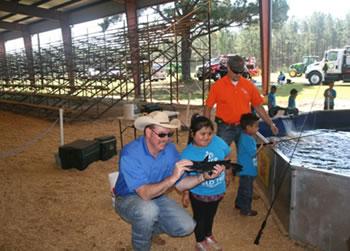 April 28, 2016 - The 2016 Shelby County Agriculture Education Day will be held on Friday, May 6th at the Sheriff’s Posse Rodeo Arena from 9:00 a.m. until noon. This fun, free, hands-on educational event is open to the public and geared towards children PreK – 3rd grades. Participants will learn about agriculture, food and nutrition, passenger safety, sport fishing, potato planting, and beekeeping, just to name a few. We have over 30 educational demonstrations scheduled with the Mobile Dairy, Texas Forest Service, Texas Parks & Wildlife, a petting zoo, hay ride, farm implement exhibits, and many more to present.
April 28, 2016 - The 2016 Shelby County Agriculture Education Day will be held on Friday, May 6th at the Sheriff’s Posse Rodeo Arena from 9:00 a.m. until noon. This fun, free, hands-on educational event is open to the public and geared towards children PreK – 3rd grades. Participants will learn about agriculture, food and nutrition, passenger safety, sport fishing, potato planting, and beekeeping, just to name a few. We have over 30 educational demonstrations scheduled with the Mobile Dairy, Texas Forest Service, Texas Parks & Wildlife, a petting zoo, hay ride, farm implement exhibits, and many more to present.
Our goal is to provide the opportunity for Shelby County youth to understand agriculture and how it affects our everyday lives. Last year we had over 1,000 youth and adults to attend this year. If you have any questions on this event, contact the Shelby County Extension office at 936-598-7744.
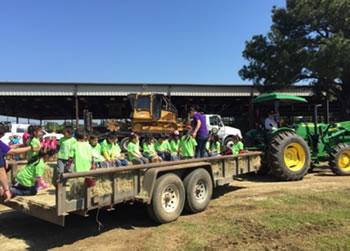 Extension programs serve people of all ages regardless of socioeconomic level, race, color, sex, religion, disability, or national origin The Texas A&M University System, U. S. Department of Agriculture, and the County Commissioners Courts of Texas Cooperating. A member of The Texas A&M University System and its statewide Agriculture Program.
Extension programs serve people of all ages regardless of socioeconomic level, race, color, sex, religion, disability, or national origin The Texas A&M University System, U. S. Department of Agriculture, and the County Commissioners Courts of Texas Cooperating. A member of The Texas A&M University System and its statewide Agriculture Program.
Submitted by Jheri-Lynn McSwain
April 27, 2016 - Treat your yards and neighborhood this spring for fire ant relief this summer and fall. Fire ants love to nest in home lawns, parks and ornamental turf grass areas. At certain times of the year, freshly worked mounds are noticeable and can be unsightly. During the winter months, there’s very little ant mounding activity and it is easy to forget they are there.
However, after all of the early spring rainfall, fire ant activity has increased. It is during these times when the ants are very active and can cause more problems especially when everyone wants to be outside after being indoors all winter long. The last thing you want at your outdoor activity is a colony of angry fire ants ready to take over and turn your happy occasion into a miserable one. Did you know that the fire ant is a native of Brazil, and was imported from this country through Mobile, Alabama in the 1930’s?
Don’t wait until you have serious ant problems. Keep those problems from happening by maintaining a good control program throughout the year. Fire ants travel from yard to yard (they could care less about property lines) and are easily dispersed due to periodic mating flights. Did you know that the fire ant queen lives for 2-5 years and can produce up to 800 eggs per day? Also, remember a high percentage of the mounds in Texas have multiple queens, meaning there is no territorial behavior, resulting in excessive numbers of fire ant mounds per acre or in the homeowners case, per yard! Because most of our mounds have multiple queens, and may be spread over larger areas than we actually see, just sprinkling a product over the top of the mound may not reduce the entire population.
In areas where fire ants produce more mounds than you care to treat one at a time (usually more than 4 in a normal yard), or where you spend more time and money on insecticides than you would like to, there is an approach that is less labor-intensive, less toxic and more environmentally friendly. It is called the Two-Step Method, Do-It-Yourself Fire Ant Control method. It is advocated by the Texas A&M AgriLife Extension Service. You can obtain a copy of the most recent fire ant management brochure (ENTO-034) by visiting the Texas A&M AgriLife Bookstore and download a copy. http://www.agrilifebookstore.org/Two-Step-Method-and-Other-Approaches-to....
The Two-Step Method goes like this:
The first step is to make a semi-annual, spring and fall, broadcast application of a fire ant bait insecticide. There are several fire ant baits available for use in urban areas such as hydramethylnon (Amdro), methoprene (Extinguish), hydramethylnon + methoprene (Extinguish Plus or Amdro Yard Treatment), pyriproxifen (Distance or Esteem), and spinosad (Ferti-Loam “Come and Get It” or Payback fire ant bait). Other products can be found on the official Texas A&M Fire Ant web page, http://fireant.tamu.edu/controlmethods/products/.
Please consult the product label and read thoroughly for the broadcast instructions!
Periodic broadcast applications of fire ant baits provide roughly 90 percent suppression of fire ants when properly applied. Baits can be broadcast over small to large areas using suitable hand-held, vehicle-mounted or aerial applicators. Apply a fresh bait product, when ants are foraging, to dry ground when no rain is expected for 24 to 48 hours after treatment. Temperature should be between 65 and 95 degrees Fahrenheit. Speed and duration of ant suppression differs with the product selected. For instance, broadcast applications of the hydramethylnon + methoprene fire ant bait provides maximum control two to four after application while methoprene fire ant bait (an insect growth regulator product) provides maximum suppression four to nine months after treatment, depending on environmental conditions. Rarely are all colonies eliminated following treatment. Bi-annual applications of the bait product keeps pressure on the fire ant population so each subsequent baiting event is much more effective since less ants are present.
About one week to 10 days after bait application, apply individual mound treatments to “nuisance” ant colonies, such as those in sensitive or high traffic areas. Otherwise, be patient and wait for the bait treatments to work. Even though some bait products are relatively fast-acting, colonies remaining active after six weeks or so have “escaped” the effects of the bait treatment and should be treated with an individual mound treatment. Ant mound treatment products are available as liquid drenches, injectable aerosols, dusts, or granules that are watered in to the mound. Ants are killed only if the insecticide contacts them, so proper application is essential. Colonies migrating into treated areas should be treated as needed. Hundreds of effective individual mound treatment products are available to choose from, and a number of them are considered to be “organic.”
For a two-step program that uses only natural products, broadcast a spinosad bait and then treat mounds with d-limonene or products containing unsynergized pyrethrins or drench with a spinosad liquid product solution. On small properties where a high degree of control is needed, consider using the “Ant Elimination” method (described in ENTO-034) utilizing a granular fipronil product such as Top Choice®, or Taurus G®. These are restricted pesticide products and can only be applied by a licensed pesticide applicator. Only one application is allowed per year preferably early spring.
None of the methods of fire ant control available today eliminate fire ants forever. The bait application may be repeated, if environmental conditions are favorable, whenever sufficient re-invasion occurs. Between these baiting treatments, nuisance mounds should be treated individually. These areas can be re-infested by colonies migrating in from surrounding areas or by newly-mated queens seeking to start new colonies. The rate of re-infestation depends on many factors such as weather, soil type and moisture, but ant populations can be expected to fully recover within 18 months of the last treatment.
Lane Dunn is the County Extension Agent for agriculture and natural resources for Shelby County. His email address is jldunn@ag.tamu.edu . Educational programs of the Texas A&M AgriLife Extension Service are open to all people without regard to race, color, religion, sex, national origin, age, disability, genetic information or veteran status. The Texas A&M University System, U.S. Department of Agriculture, and the County Commissioners Courts of Texas Cooperating.
Submitted by Lane Dunn










